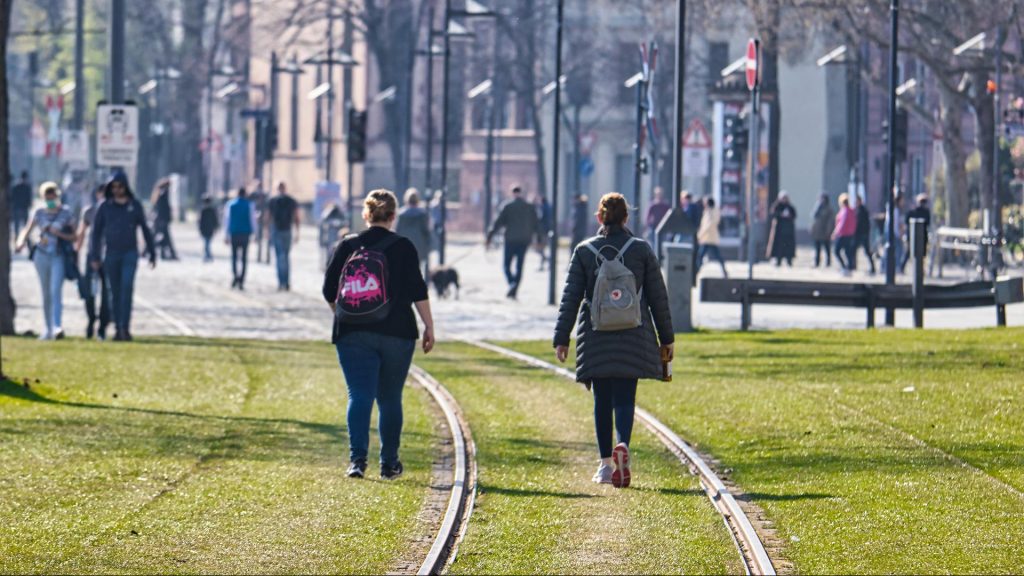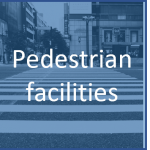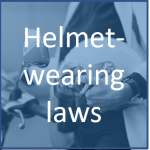Lower speed limits in this context means:
Legally defined maximum speed limits, indicated by static road signs and appropriate infrastructure design, including traffic calming, roundabouts, raised intersections and crossings, and gateway treatments.

In Toronto, Canada, speed limit reductions from 40 km/h to 30 km/h resulted in a 28% reduction in pedestrian crashes between 2013 and 2018 and a statistically significant 67% reduction in serious and fatal injuries in the post-intervention period. Other measures to support the lower speed limits on local roads included senior safety zones, flex-post signs, red-light cameras, watch your speed boards, and school safety zone interventions (such as pavement markings, flashing beacons, school signage, and zebra crosswalks). Read more (Fridman, L., Ling, R., Rothman, L., Cloutier, M. S.,Macarthur, C., Hagel, B., & Howard, A. (2020). Effect of reducing the posted speed limit to 30 km per hour on pedestrian motor vehicle collisions in Toronto, Canada – A quasi experimental, pre-post study. BMC Public Health, 20(1), 1–8. )

In Bogotá, Colombia, a speed management program was developed to improve the road environment and guarantee the safety of all road users. The initiative targeted 5 corridors with the highest casualty rates in 2018, here the speed limit was lowered from 60 km/h to 50 km/h and speed cameras were set up to enforce compliance. As a result of this program, 46 lives were saved in 2019 – a 21% drop in road deaths compared to the average for the three years prior (2015-2018). The interventions were therefore extended to 10 arterial corridors in 2019. Read more (P. 14, ITF. (2021). Road Safety in Cities: Street Design and Traffic Management Solutions. International Transport Forum Policy Papers, 99, OECD Publishing, Paris.)
3. Call upon Member States to contribute to reducing road traffic deaths by at least 50% from 2020 to 2030 in line with the United Nations High-Level Political Forum on Sustainable Development’s pledge to continue action on the road safety related SDG targets, including 3.6 after 2020, and to set targets to reduce fatalities and serious injuries, in line with this commitment, for all groups of road users and especially vulnerable road users such as pedestrians, cyclists and motorcyclists and users of public transport;
7. Include road safety and a safe system approach as an integral element of land use, street design, transport system planning and governance, especially for vulnerable road users and in urban areas, by strengthening institutional capacity with regard to road safety laws and law enforcement, vehicle safety, infrastructure improvements, public transport, post-crash care, and data;
11. Focus on speed management, including the strengthening of law enforcement to prevent speeding and mandate a
maximum road travel speed of 30 km/h in areas where vulnerable road users and vehicles mix in a frequent and planned manner, except where strong evidence exists that higher speeds are safe, noting that efforts to reduce speed in general will have a beneficial impact on air quality and climate change as well as being vital to reduce road traffic
deaths and injuries;
14. Call upon businesses and industries of all sizes and sectors to contribute to the attainment of the road safety related SDGs by applying safe system principles to their entire value chain including internal practices throughout their procurement, production and distribution process, and to include reporting of safety performance in their sustainability reports;
Speed Management (Page 14)
Infrastructure design and improvement (Page 14)
Target 3: By 2030, all new roads achieve technical standards for all road users that take into account road safety, or meet a three star rating or better.
Target 4: By 2030, more than 75% of travel on existing roads is on roads that meet technical standards for all road users that take into account road safety.
1. Drive the implementation of the Global Plan for the Decade of Action for Road Safety 2021-2030, which describes key suggested actions to achieve the reduction in road traffic deaths of at least 50% by 2030 and calls for setting national targets to reduce fatalities and serious injuries for all road users with special attention given to the safety needs of those road users who are the most vulnerable to road-related crashes, including pedestrians, cyclists, motorcyclists and users of public transport, taking into account national circumstances, policies and strategies.
2. Develop and implement regional, national and sub-national plans that may include road safety targets or other evidence-based indicators where they have been set and put in place evidence- based implementation processes by adopting a whole-of-government and whole-of-society approach and designating national focal points for road safety with the establishment of their networks in order to facilitate cooperation with WHO to track progress towards the implementation of the Second Decade of Action for Road Safety 2021-2030.
3. Promote systematic engagement with relevant stakeholders, including from transport, health, education, finance, environmental and infrastructure areas, and encourage Member States to consider becoming contracting parties to the United Nations legal instruments1 on road safety and, beyond accession, applying, implementing and promoting their provisions or safety regulations.
4. Implement a Safe System approach through policies that foster safe urban and rural road infrastructure design and engineering; set safe adequate speed limits supported by appropriate speed management measures; enable multi-modal transport and active mobility; establish, where possible, an optimal mix of motorized and non-motorized transport, with a particular emphasis on public transport, walking and cycling, including bike-sharing services, safe pedestrian infrastructure and level crossings, especially in urban areas.
5. Adopt evidence-and/or science-based good practices for addressing key risk factors including the non-use of seat belts, child restraints and helmets, medical conditions and medicines that affect safe driving, driving under the influence of alcohol, narcotic drugs and psychotropic and psychoactive substances, inappropriate use of mobile phones and other electronic devices including texting while driving, speed driving, driving in low visibility conditions, driver fatigue, as well as the lack of appropriate infrastructure; and for enforcement efforts including road policing coupled with awareness and education initiatives, supported by infrastructure designs that are intuitive and favour compliance with the legislation and a robust emergency response and post-crash care system.
6. Ensure that road infrastructure improvements and investments are guided by an integrated road safety approach that inter alia takes into account the connections between road safety and eradication of poverty in all its dimensions, physical health including visual impairment and mental health issues, the achievement of universal health coverage, economic growth, quality education, reducing inequalities within and among countries, gender equality and women’s empowerment, decent work, sustainable cities, environment and climate change, as well as the broader social determinants of road safety and the interdependence between SDGs and targets that are integrated, interlinked and indivisible and assures minimum safety performance standards for all road users.
9. Integrate a gender perspective into all policymaking and implementing transport policies that provide for safe, secure, inclusive, accessible, reliable and sustainable mobility, and non- discriminatory participation in transport; and ensure that policies cater to road users who might be in vulnerable situations, in particular children, youth, older persons and persons with disabilities.
10. Deliver evidence-based road safety knowledge and awareness programmes to promote a culture of safety among all road users and to address high-risk behaviours especially among youth, and the broader road using community through advocacy, training and education and encourage private sector participation in supplementing national efforts in promoting greater road safety awareness as part of corporate social responsibility.
12. Acknowledge the importance of adequate, predictable, sustainable and timely international financing without conditionalities in complementing the efforts of countries in mobilizing resources domestically, especially in low and middle-income countries; support the demands of financing in developing countries by leveraging the United Nations Road Safety Fund and other dedicated mechanisms, as appropriate, for promoting safe road transport infrastructure and for supporting implementation of measures required to meet the voluntary global performance targets, including by supporting the voluntary replenishment of all UN system road safety funds and mechanisms




